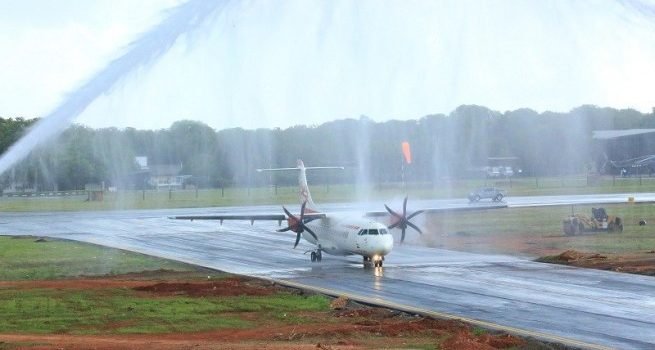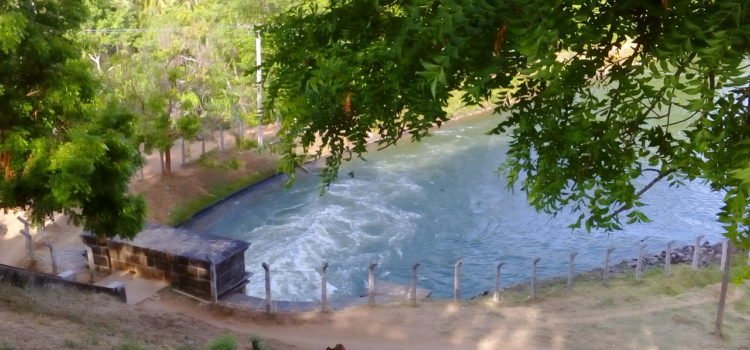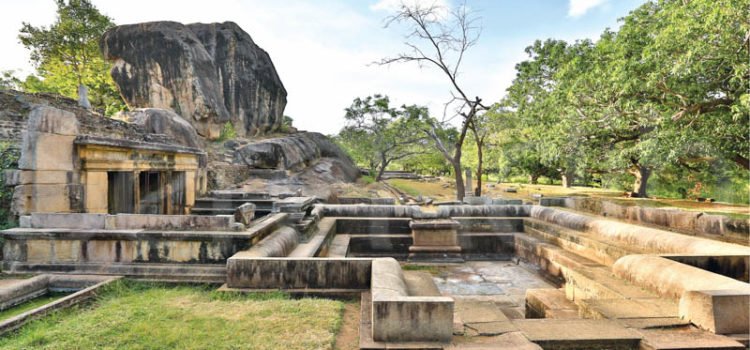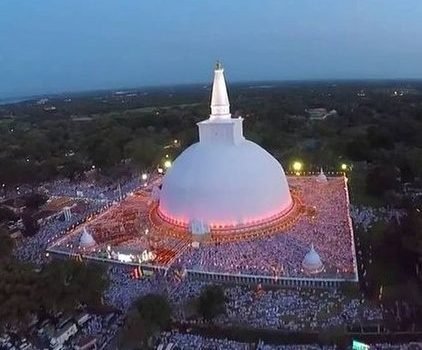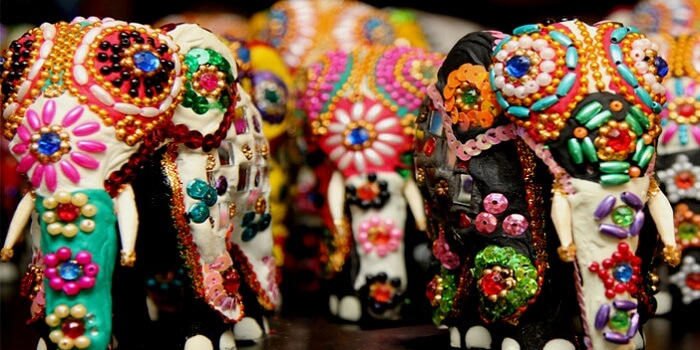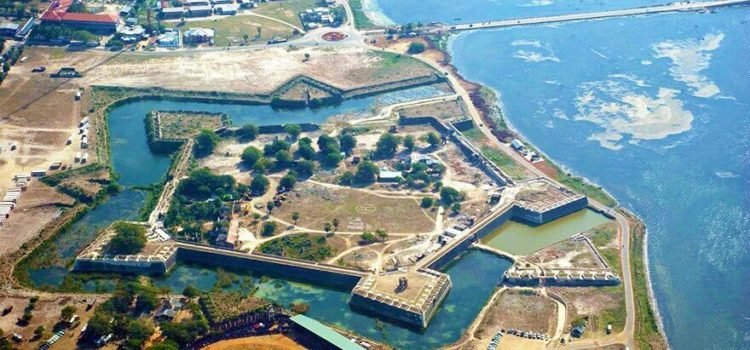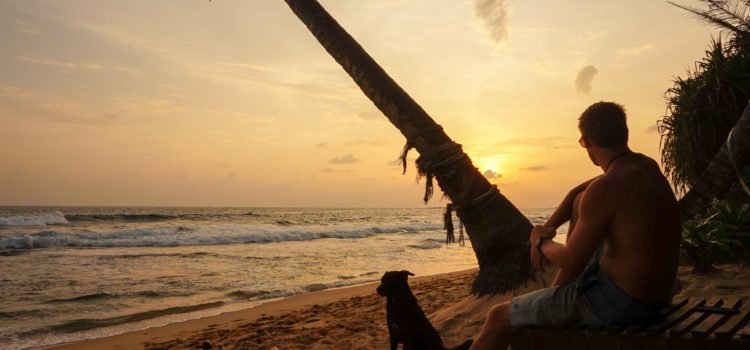Sri Lanka opens third international airport
Sri Lanka opened its third international airport yesterday, paving the way for travellers to fly into the Northern Peninsula of the island.
An ATR 72-600 aircraft carrying the Air India Chairman and Alliance Air CEO amongst other staff and journalists, was welcomed at the Jaffna International Airport (JIA) with a water salute and great enthusiasm for the possibilities ahead.
The JIA was previously known as Palaly Airport and was primarily used as a military airbase and for domestic flights. Further construction is due to take place over two more phases with the next three months focusing on extending the current runway. The final phase will see the runway extended to allow JIA to handle larger aircraft.
Commercial flights from Chennai to Jaffna are due to start on the 1st of November this year, with plans of covering Batticaloa on Sri Lanka’s East Coast as well. Air India has also been permitted to fly from Jaffna to Colombo, although it is unsure when they will start.
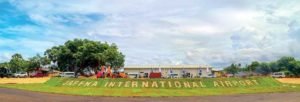
Almost all international flights currently operate via the Bandaranaike International Airport which is closer to Colombo, so the hope is that the JIA will be able to reduce the crowds at BIA, while also reducing road travel time for tourists.
Sri Lanka set to transform tourism industry
Batticaloa Domestic Airport to be upgraded as tourist numbers start to rise again
Over the past decade, tourism has been the fastest growing industry in Sri Lanka. The island was one of travel’s best kept secrets for many years, but word slowly started to spread and the 2010s saw a huge influx of visitors to the island, driven by the likes of Lonely Planet who branded Sri Lanka as ‘the world’s hottest travel destination’ in 2017. Even with the tragic events of Easter Sunday 2019, which significantly reduced tourist numbers last year, just a few weeks ago Sri Lanka was named one of the best places to visit in 2020 by Condé Nast Traveller.
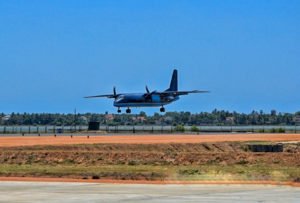
As a country largely dependent on tourism, Sri Lanka has always been conscious of attracting visitors to the island – not that they need much persuasion beyond the beautiful beaches, incredible wildlife and dynamic culture – and the government has taken multiple measures over the years to ensure that the country can cater for the needs of its tourists. These measures range from building more hotels to improving road infrastructure, with the latest development plan being the expansion of Batticaloa Airport.
Batticaloa Airport is currently only set up for internal flights, serving domestic airlines such as Cinnamon Air, but at the start of the new year the local government announced plans to upgrade Batticaloa to international standards. Arjuna Ranatunga, Minister of Transport and Civil Aviation, believes that this will help improve the tourism industry by reducing the crowds at Bandaranaike International Airport and reducing road travel time for tourists. Sri Lanka currently has three international airports, the most recently opened being Jaffna, which paved the way for travellers flying into the northern peninsula of the island.
Yoda Ela – An Ancient Engineering Marvel
Ancient Sri Lankans are celebrated for their indigenous knowledge in irrigation. Irrigation systems of ancient Sri Lanka consist of a large number of village tanks, gigantic reservoirs and an intrinsic network of water canals connecting these tanks while supplying water to farming land.
Despite the abundance of irrigation constructions in Sri Lanka, Yoda Ela or Jaya Ganga, an 87 km long water canal carrying excess water from Kala Wewa in Polonnaruwa to ThissaWewa in Anuradhapura, is a construction dependent on remarkable instrumentation precision.Its gradient of10 to 20 cm per kilometre still baffles experts today for its minute precision.
Built during the regime of King Dathusena in fifth century AD, who also sponsored the construction of Kala Wawa reservoir, Yoda ela was constructed to convey excess water from Kala Wawa in Polonnaruwa to Thissa Wawa reservoir in Anuradhapura.
However the ancient engineering methods in calculating the exact elevation of the Kala Wewa against ThissaWawa and the exact gradient of the canal to such fine precision had been lost with the fall of the civilisation.
Moreover the ingenuity of ancient engineers is also exhibited in how Yoda Ela was designed as an elongated reservoir, which passes through traps creating sixty six mini-catchments as it flows from Kala Wawa to Thissa Wawa. The canal was not designed for the quick conveying of water from Kala Wawa to Thissa Wawa but to create mass of water between the two reservoirs, which would in turn provided for agriculture and the use of humans and animals.
Another unique feature of the Yoda Ela is that the canal has only one bund to manage the canal pressure with the influx of water. Two bunds would have increased the pressure causing damage while with one bund the water spreads on the upper side and releases the pressure creating no danger to the bund. Built along the contours the canal collects and dispenses water throughout its 87 km flow length.
Many a features had been added to the canal since its construction. King Parakramabahu who governed the country nearly 700 years after the Yoda Wawa, reconstructed the canal added more feeders to the canal starting from thirty four reservoirs found between Kala Wawa and Thissa Wawa, re-naming it Jaya Ganga or the river of victory.
The extra water from these tanks would be fed to the canal which would distribute it in an area of 180 square miles feeding 11,400 acres of paddy lands and 120 small tanks.
However part of this ingenious creation was destroyed during the attempts to create a second Jaya Ganga under the Mahaweli Development Project causing dearth of water to some parts of the dry zone while measures are now been taken to reverse the damage done to an engineering marvel of ancient Sri Lanka.
The Stargate at Ranmasu Uyana
The Stargate at Ranmasu Uyana – Remnants of a Lost Civilization?
Sandwiched between the Thissa Wewa reservoir and the Isurumuniya Rock Temple, RanmasuUyana of Anuradhapura, a forty acre pleasure garden of the ancient Sri Lankan royals is a unique creation.
The Ranmasu Uyana was mainly known for its rock sculpted bathing ponds with a sophisticated hydraulics mechanism. A subtle use of pressure difference enables the pumping of water from the nearby Tissa Wewa to the swimming pools of the garden. The pools themselves display a clever use of technology and craftsmanship, in constructing a flawless luxury swimming facility nearly three thousand years ago.
However the true wonder of RanmasuUyana is found among the rock boulders and caves away from the pools. Carved on a stone wall is a strange map like chart known to many as the ‘stargate’. A stargate is believed to be a gateway between the earth and the outer space, through which humans allegedly roamed the universe communicating and engaging with other intelligent beings in the universe. This chart is believed to be the secret code to accessing the stargate. Facing the stargate marking are four seats, which implies that it was a chart, which could be used or manipulated by four individuals.
The discovery of the stargate marking had created waves amidst archaeologists and pre-historic investigators, some drawing parallels between the stargate charts found in Abu Ghurab in Egypt and ‘the gate way to the gods’ in Peru. The bizarre coincidence of all the three marks been found in the vicinity of a water way, with sophisticated engineering methods, had given rise to various theories.
Stargate at Ranmasu Uyana in Sri Lanka

Stargate at Peru
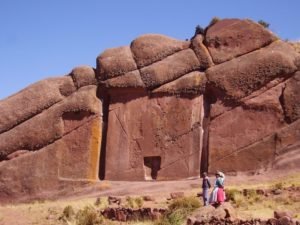
Stargate at Abu Ghurab in Egypt
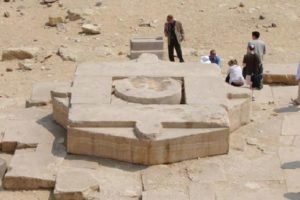
The most favourite is the claim that these stargates were used by extraterrestrials that were gold mining in Earth. Their theory is built up on the fact that in 2400 BC the stargate in Abu Ghurab Egypt was surrounded by water while” La Puerta de HayuMarka.” Or “The Gateway to The Gods” in Peru too is built closer Lake Titicaca, with underground water tunnels and chambers beneath the pyramids.
The advocates of the ‘processing gold from the waters of Earth’ theory believes that these water channels, chambers, reservoirs and filters found near each stargate to have been a part of a sophisticated mechanism developed by extraterrestrials thousands of years ago.
If the theory is held to be true, RanmasuUyana had once been a ‘gold processing center of extraterrestrials’, which arrived on earth through stargates.
Yet archaeologists are eager to discard these theories as pure imagination. According to the earliest archaeologists and historians the charts could have been a descriptive chart of the universe according to Buddhism or a simple map of the earth. At later stages the historians have interpreted them as descriptions of animal evolution or as the way Tantric Buddhist monks perceived the world. It is believed that they used them for meditation purposes as well.
Present day archaeologist abhor the thought of comparing Egyptian civilisation with the Sri Lankan civilisation, insisting that ours is a unique island civilisation pure of Egyptian or Babylonian influence.
Whatever their initial use may have been, the interpretations provided for these markings varies from a secret key to space travelling to the floor plan of Sigiriya, a rock garden found closer to Anuradhapura. Yet the only fact about these charts is that despite various claims and arguments, we are nowhere near to understanding them or knowing their sources.
The Star Tracing Stupas of Sri Lanka
Mirisawetiya, Ruwanweliseya and Jetavanaya- The Star Tracing Stupas of Sri Lanka
Many a megalithic structures had been built across the globe in the ancient times emulating the position of star constellations. Despite being built by various nations at different periods of time there are certain similarities between them in structure and purpose, which had baffled the modern archaeologists for centuries.
Many ancient cultures had built pyramids or pyramid-like structures.There are large pyramids in South America, Egypt, China, and some smaller ones in Greece, North America, the Canary Islands and Indonesia.
The construction of these monuments had involved very big and very heavy blocks of stones, which would have required extreme skill and energy to produce and to transport. The seamless and smooth finish of these stone made constructions including the ancient constructions in Sri Lanka would have required a precision and skill beyond mere human capability.
Many wonder as to why blocks as heavy as many tons were used if not for a specific reason. Also, in Egypt, Peru, Sri Lanka and Easter Island, there are certain walls which are consisting of very heavy interlocking stone blocks of various sizes, seamlessly pieced together like a puzzle, and without the use of composite building material.
Like the great stupas of Sri Lanka these giant constructions were also believed to be enshrining the remains of the Kings and leaders yet many had proved this theory false. While some pyramids in South Americas were use as tombs they had also served a purpose more complex than a mere a mausoleum while pyramids in Giza, Egypt were never used as tombs.
For centuries Sri Lankans too believed the ancient great Stupas to be mere objects of worship enshrining the remains of Lord Buddha and the arhants or the enlightened ones.
Likewise their alignment with the stars above is a common phenomenon shared by many of these megaliths. Pyramids in Egypt and Mexico, the three great stupas of Anuradhapura and Angkor Wat in Cambodia, seem to be coordinated to specific star constellations.
Three large pyramids at the Giza plateau of Egypt, conclusively match three specific stars from the belt of the star constellation of Orion: Alnitak, Alnilam en Mintaka. Furthermore, two of the other stars of Orion had matched with the destroyed pyramids in Abu Rawash and the pyramid in Zawjet Al Arjan
The three great stupas of Anuradhapura; Mirisavatiya, Ruvanweliya and Jetavanaya perfectly aligns with the three stars in the constellation of Orion, namely Rigel, Al Nitak and Bellatrix. The three sides of the triangle in the ground layout of the three stupas, built between 161 B.C. and A.D. 331, correlates precisely with the three sides of the triangle of three stars on the right-hand wing of the constellation of Orion creating heaven-earth duplication.
Ruwanweliseya Stupa
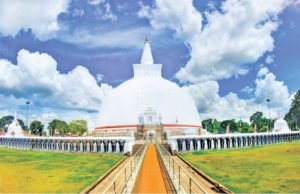
Mirisawetiya Stupa
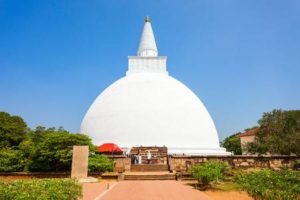
Jetavana Stupa

Meanwhile Angkor Wat of Cambodia,the largest Hindu temple complex and the largest religious monument in the world, built in the 12th century, is believed to be part of a representation of the constellation Draco.
Mapping of the Great Stupas of Sri Lanka
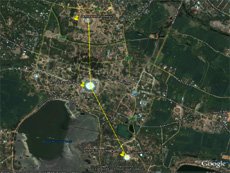
Mapping of the Pyramids at Giza Plateau of Egypt
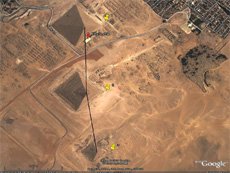
Orion’s Belt

These earth and celestial duplications and their advanced building techniques had intrigued researchers and archaeologists for generations but the present investigators are nowhere near to deciphering the secrets behind these mega structures.
Yet recent discoveries in Sri Lanka have revealed that Ruwanweliseya of Anuradhapura could have been a giant energy storing device, which also could have exchanged energies with the skies above.
According to a multi-disciplinary investigation conducted by Architect ShereenAmendra, the structure of the Ruwanweliseya, known as the Mahastupa, its position and the material used for the construction were instrumental in creating a giant size capacitor which exchanged electric charges with the heavens above.
According to the Mahavamsa, the great chronicles of Sri Lanka the choice of ground for the construction of MahaStupa had been done by Lord Buddha himself while the structural plan for the stupa had been done by the Arhants or the enlightened ones of the MahaVihara. The stupa, which enshrines a large amount of relics of Lord Buddha, had been constructed using precious metals like silver and gold and precious stones, known to be excellent electricity conductors.
In her book ‘Beyond the seeing eye: the Mahathupa of Lanka Ms. Amendra questions whether the mahathupa was used to transform thoughts to electric power and transmit them to the celestials while receiving messages from them.
A device designed by enlightened arhants beyond the understanding of mere mortals, yet still transmitting the thoughts and aspirations of many devotes who gather around it in prayer.
Ravana – The Legendary Emperor of Sri Lanka
The life of Ravana, one of the most powerful beings ever to roam the universe, if Hindu legends are to be believed, had unfolded in the small island Sri Lanka, where he ruled with mighty power over gods, humans and demons. Valmiki’s Ramayana paint Ravana as a tyrant of mighty power who was holding the gods at ransom, and he continues to be treated as a blackguard in India even today. In the classic text, he is found kidnapping Rama’s wife Sita, to claim vengeance on Rama and his brother Lakshmana for having cut off the nose of his sister Surpanakha. Yet Ravana of Sri Lanka is portrayed to be a different king and a human. He is described as a devout follower of the god Shiva, a great scholar, a capable ruler and a maestro of aveena, known as the ravanhattha. The story goes that Ravana in order to please his mother had decided to bring the mountain Kailash to Sri Lanka. As he lifted up the mountain, God Shiva was angered by his arrogance and pushed it back down, trapping Ravana. The King of Lanka had torn off one of his own arms and made a musical instrument, ripping out sinews to form the strings. He used the newly invented ravanhattha to sing the praises of Shiva, creating music of such beauty that Shiva wept and forgave him. According to Hindu mythology Ravana was born to a great sage Vishrava and his wife, princess Kaikesi. He was born in the Devagana, as his grandfather, the sage Pulastya, was one of the ten Prajapatis or mind-born sons of Brahma and one of the Saptarishi or the Seven Great Sages during the age of Manu.Ravana’s siblings include Vibhishana, Kumbhakarna and Ahiravana and a step brother Kubera, from whom he usurped the Kingdom of Lanka.
Lanka was an idyllic city, created by the celestial architect Vishwakarma himself and was the home of Kuwera, the treasurer of the gods, when Ravana demanded Lanka wholly from him, threatening to take it by force. Although Ravana usurped Lanka, he had been a benevolent and effective ruler. Lanka flourished under his rule and Ravana had proceeded on a series of campaigns conquering humans, celestials and demons.
It is said that Ravana ruled Lanka for several hundred years prior to the times of Ramayana, when he was killed by prince Rama for kidnapping his wife Sita.
Yet some believe Ramayana to be a semi-fiction woven around a real King who ruled over Sri Lanka from 2554 to 2517 BC.Sri Lankan lore has it that Sri Lanka under the scholarly Ravana saw great advancements in science and medicine. The pushpaka vimana or the aeroplane which he flew is held as an example of great scientific achievements made during his regime while Ravana also holds a high position as a physician and there exists, to this day, seven books on Ayurveda in his name. He is also believed to have authored Ravana Sanhita, an anthology of Hindu astrology and his description as a ten-headed person, Daśamukha or Daśagrīva, is believed to be a reference to his vast knowledge and intelligence.
His Kingdom had mainly concentrated around the Eastern and Southern corners of the country and believed to have been lost to the sea with the years.

Some even go as far as to insist that Ravana was a Buddhist king and holds him to be the creator of monasteries found in Sri Lanka like Kuragala and Rahalgala. The country is filled with locations which are linked to the Ravana legend like SitaElisa in NumaraElisa, which is believed to be a prison of Princess Sita while Wariyapola and Horton Plains are considered to be the landing sites of his flying machine. Rumassala, a mountain peak by the Southern oceans of Sri Lanka is too linked to the Ravana legend and is held to be a part of the Himalaya Mountain. The mountain filled with medicinal plants was allegedly brought to Sri Lanka to treat the injured of the Rama-Ravana war was left in the country and is still filled with herbs of rare medicinal value. Adam’s Bridge, a chain of limestone shoals, between Rameswaram Island, off the south eastern coast of Tamil Nadu, India, and Mannar Island, off the north western coast of Sri Lanka too is connected to the legend of Ravana. Also known as Rama-Sethu or Rama’s bridge the land mass is believed to be a bridge built by monkeys interconnecting India and Sri Lanka and enabling the crossing of Rama’s army. Investigations conducted by Indian National Remote Sensing Agency had suggested that the land connection could be a manmade structure built 5000 to 3500 years ago. Yet Sri Lankan Ravana fans contradict its origin and its builder. Sri Lankan historians believe that the bridge was built by Ravana and was a floating structure connecting Lanka with lands in India.
According to them the bridge was later used by Rama’s army who crossed boundaries to Ravana’s Lankapura and overthrew one of the greatest rulers of the world with the assistance of his brother Vibishana, bringing down one of the most advanced civilisations in the history.

WELCOME TO SRI LANKA HERITAGES
Sri Lanka; the Natures Treasure Chest is the home to one of the oldest civilizations in the world. Sri Lanka’s written history exceeds 2550 years. Its pre-history consist of planned cities, magnificent palaces, and expansive man made reservoirs, stunning temples and monasteries, green gardens, hard to believe monuments and works of art are characteristic of the rich and jubilant lives the celebrated monarchy of Sri Lanka lived. Sri Lanka is situated to reach in a few hours from any part of the world. It is one of the most delightful destinations in the world to visit.
- Sri Lankan’s are always hospitable, smiling, friendly and helpful people.
- Sri Lanka has ideal tropical weather all year-round.
- Sri Lanka possesses the most beautiful scenery.
- Sri Lanka has authentic history with eight world heritage sites.
- Sri Lanka is most likely the most bio-diverse Island of its size in the world.
- Sri Lanka’s wildlife; Leopards, Bears, Elephants, Wild Buffaloes and Birds.
- Sri Lanka’s nature sites of rolling hills carpeted with tea bushes and lush forests.
- Sri Lanka has the finest golden sand beaches over 1400 kms in the world.
- Sri Lanka has Asia’s most wonderful pageant, the Kandy Esala Perahera.
- Sri Lanka has many more colourful festivals throughout the year.
- Sri Lanka has eight UNESCO world heritage sites.
Sri Lanka has been able to preserve certain aspects of the performing arts, architecture and religious practices of by-gone civilizations, providing an opportunity for present and future generations to gain some insight into Sri Lanka’s great engineering achievements and ideas and understand why they are still with us today.
This is a very brief account of Sri Lanka; The Natures Treasure Chest.
NATIONAL SYMBOLS OF SRI LANKA
National Flag
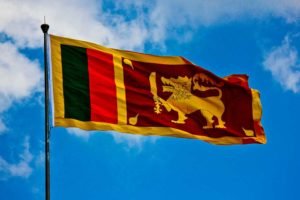
The National Flag of Sri Lanka has been designed with great care and purpose. It not only represents the country and her heritage, but is a rallying device that integrates the minority races with the majority race.
National Emblem
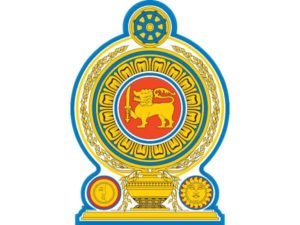
Sri Lanka used the British emblem when it was a British Crown Colony. We continued to use it even after gaining independence in 1948. According to the recommendations of a select committee appointed to devise a state emblem more suitable for Sri Lanka (Ceylon) we opted for a new State Emblem. It had a Lion with Sword in its right fore-paw encircled with a Palapethi open petal design top. Below there was a strip carrying the country’s name in Sinhala, Tamil and English. A new republican emblem was chosen after the country was declared a Republic on May 22, 1972. In addition to the lion with a sword and the Palapethi open petal design it portrays the Punkalasa, Dhammachakka, sun, moon and two sheaves of paddy.
National Tree
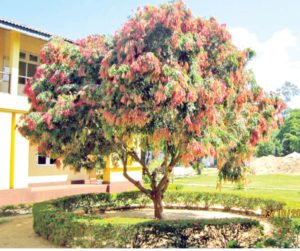
Iron Wood
NA in Sinhala-Iron Wood in English Botanically Mesua Ferrea
National Flower

Blue Water Lily
Nil Manel or Blue Water Lily or Nymphaea stellata
In February 1986 blue water lily was chosen as the National flower. Found all the part of Sri Lanka and grows in the shallow water. Petals arranged like a star and the flat round waterproof leaves are bright green. It`s a symbol of purity and truth.
National Bird
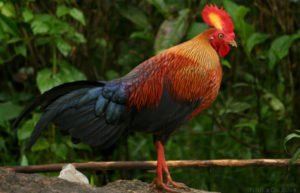
Ceylon Jungle fowl
Wali kukula or Ceylon Jungle fowl or Gallus Lafayetti Jungle fowl the National Bird of Sri Lanka is commonest in the National Parks and forests.
10 Good Reasons to Visit Sri Lanka
If golden beaches, rising waves, misty mountains, mighty elephants, stealthy leopards, giant whales, a majestic past, lovely tea and warm smiles could sum up a country, that would be Sri Lanka.
With many sites and scenes bottled up in to a small island, a traveller could be riding the waves in the dawn and admiring the green carpeted mountains by dusk. Travel destinations in Sri Lanka provide an array of holiday experience from sun kissed beach holidays to a marathon of wildlife watching, adrenaline pumping adventure sports and pilgrimage to some of the oldest cities in the world.
The smiles and hospitality of Sri Lanka id world famous and so are its spicy food, exotic fruits and array of sweetmeats found nowhere in the world. With so many cultures living next to each other life in Sri Lanka continues among a series of festivities throughout the year, an ideal recipe for fun and leisure.
Diversity
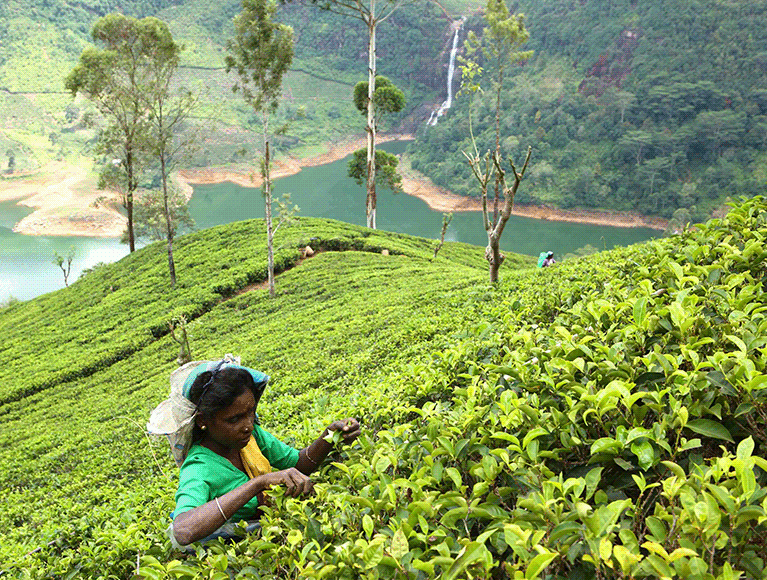
Sri Lanka is a small miracle partly due to the compact physical diversity of this pearl-shaped island – but, as we shall see, this diversity extends to virtually every aspect of life. Fringed by variously-shaped sublime beaches, from straight expanse to rocky cove, the island possesses a coastal plain containing a host of geographic features such as lagoons, wetlands, rivers and various types of wildlife-rich jungle.
The plain ends in the central area where the land starts to ascend into mist-shrouded mountains, covered in forests of wind-stunted trees (in fact there are seven different types of forest in Sri Lanka), plains known as patanas, and rolling tea plantations. In addition, the hillsides are invariably punctuated by dramatic waterfalls.For its size Sri Lanka has perhaps the largest number of waterfalls of any country.
People
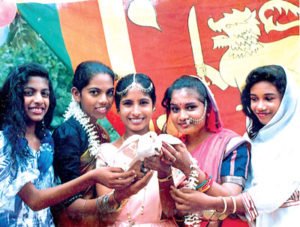
Sri Lanka is a multi-ethnic, multi-religious and multi-cultural society, a reflection of the island’s encounter with successive foreign immigrants. But it all began with indigenous people, the Veddahs, hunter-gatherers who exist today.
The main ethnic groups are the Sinhalese and Tamils, both originally from the Indian subcontinent. Then there are Muslims, who settled in the island from the time it became an ancient trading centre. Similarly, Malays and Chinese were also attracted to the island.
The Portuguese and British brought with them Kaffirs from Africa, and the Dutch an assortment of European traders, the Burghers. There are other communities too, the Chetties from South India for example. . . the list is extraordinary
Whatever their situation in society, the people of Sri Lanka possess a warm and friendly nature reflected in persistent smiling faces and eagerness to help those unfamiliar with aspects of local life. You’ll find that Sri Lankans are very hospitable and take pride in inviting people to their homes, however modest they may be. So don’t be surprised if a driver or guide, or indeed virtually anyone encountered, requests the pleasure of your company. And don’t decline, as Sri Lankan hospitality is taken very seriously!
Cultural Heritage
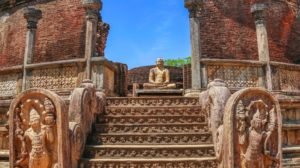
Sri Lanka’s cultural depth is recognized by UNESCO, which has declared six archaeological World Heritage Sites in the country:
- The sacred city of Anuradhapura
- The ancient city of Polonnaruwa
- The golden temple of Dambulla
- The ancient city of Sigiriya
- The sacred city of Kandy
- The old town of Galle and its fortifications
- (The seventh World Heritage Site in Sri Lanka is an ecological example, The Sinharaja Forest Reserve.)
From enormous dagobas (dome-shaped structures) and remains of ancient buildings in the ruined cities of Anuradhapura and Polonnaruwa, to the awesome stairway to the temple at Dambulla and the sensual frescoes of heavenly maidens at the palace at the rock of Sigiriya, visitors can experience these World Heritage Sites within a compact area called the Cultural Triangle.
In the hill country lies the former royal capital of Kandy, home to the Dalada Maligawa or Sacred Temple of the Tooth, which houses the sacred tooth relic of the Buddha. With its distinctive architecture, art and music, Kandy is a bastion of traditional culture.
In contrast, experience the colonial heritage of the country by heading south to the mid-17th c. Dutch fort at Galle, the best preserved in Asia. With 14 massive bastions, a grid system of streets, and some original Dutch bungalows, the fort bustles with life just as it did when Galle was the country’s main port. It’s simply one of the most unique attractions in Sri Lanka.
Festivals Year Around
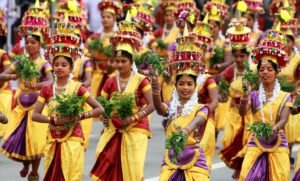
Sri Lanka’s ancient civilization endows the island with a legacy of colourful festivals relating to the
Buddhist Hindu, Muslim and Christian religions.Furthermore, these festivals are commemorated with the
flair of a people with a genius for pageantry and ritual.
Every full moon day is a public holiday known as poya. The most important is in May – Vesak Poya – which marks the Buddha’s birth, enlightenment and Pariniwana (passing away). Worth seeing are the illuminated pandals (bamboo frameworks), hung with pictures depicting events in the life of the Buddha.
Sri Lanka’s most tourist-oriented festival is the Kandy Esala Perahera, held in Kandy over 10 days in late July to early August and climaxing on Esala Poya.Perahera means “procession” and that’s exactly what occurs nightly – a magical passing-by of drummers, dancers, whip-crackers, acrobats and robed elephants. A caparisoned tusker carries the reason for the festival, the sacred tooth relic of the Buddha for the people to venerate.
Hindu festivals include Vel, held in Colombo in July, in which God Skanda’s silver-plated chariot and vel (spear) are paraded across the city, and the Kataragama Festival in the deep south, also connected with Skanda, in which fire-walkers participate.
Ayurveda & Spas
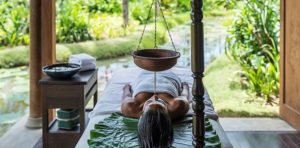
Sri Lanka has always been a place that refreshes not just the mind and body, but also the soul and
spirit. And for thousands of years, the most popular method used to restore and rejuvenate tired
bodies and weary souls has been Ayurveda – the oldest and most holistic medical system available
in the world
Sri Lanka has been a centre of spiritual and physical healing for 2,000 years. Ayurvedic programmes consist of a range of herbal treatments and various types of baths and massages, together with cleansing and revitalization techniques such as yoga, meditation and special diets.
Sri Lanka now has a number of spas, mainly on the west coast, which not only provide Ayurveda but also other Eastern and Western therapies, such as Thai massage, hydrotherapy, herbal baths, reflexology and beauty treatments. For those seeking spiritual nourishment, meditation courses are also available.
Wildlife
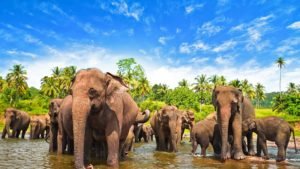
The need to conserve the environment was deeply ingrained in traditional Sri Lankan society: in the 3rd c. BC, the country’s first Buddhist monarch established the world’s first wildlife sanctuary. Today, this tradition continues with 13% of Sri Lanka conserved as national parks, reserves, sanctuaries and jungle corridors.
Sri Lanka possesses a high degree of biodiversity. Indeed the island (together with the Western Ghats of India) has been identified by Conservation International as one of 34 world biodiversity hot spots. In addition, The Sinharaja Forest Reserve, the country’s last viable area of primary tropical rainforest has been designated a UNESCO World Heritage Site. What’s remarkable is the high proportion of endemic species.
A safari in one of the 14 national parks offers the chance to see some of Sri Lanka’s 91 mammals (16 endemic) – elephant, leopard, sloth bear, sambhur, spotted deer, hog, mouse- and barking-deer, wild boar, porcupine, ant-eater, civet cat, loris, giant squirrel, and monkeys such as the macaque, purple-faced leaf monkey and grey langur.
The island is an ornithologist’s paradise, with over 233 resident species, (33 endemic) – but migratory species stretch the number to an astounding 482. There are 171 reptiles (101 endemic including two crocodile species). Thankfully, only five of the 83 snake species are lethal. In recent years there has been a surge in the discovery of amphibians, so that by the time you read this, the figure of 106 (90 endemic), will no doubt have risen.
Adventure and Special Interest Sports
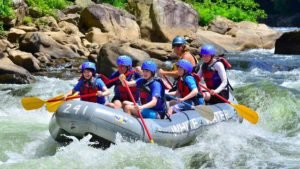
With over 1,600km of coast, Sri Lanka is an ideal location for wind-surfing, water-skiing, surfing, sailing,scuba-diving (including wreck-diving), snorkelling, speed-boating and banana-boating. Prime water-sports sites are located in the Negombo region on the west coast, Wadduwa, Kalutara and Beruwela on the south-western coast, and Bentota, Hikkaduwa, Galle, Unawatuna, Koggala, Tangalle and Hambantota on the southern and south-eastern coasts. Water-sports providers are run by local and foreign professionals (including PADI-qualified instructors) and rent state-of-the-art equipment
Sri Lanka possesses over 100 hundred rivers, together with lagoons and ‘tank’ (irrigation lakes), so there are plentiful opportunities for year-round kayaking and canoeing, perhaps combined with a camping trip. Two popular locations are the Kalu Ganga and the Kelani Ganga (rivers).
The Kelani Ganga near Kitulgala has fast headwaters and rapids ideal for white-water rafting (from November to April only), with names such as Virgin’s Breast, Head Chopper, Killer Fall, Rib Cage and Slot and Drop.
Varied landscape, wildlife, and archaeological sites offers excellent opportunities for trekking. Nature trails of exceptional interest include the Sinharaja rainforest, the cloud-forests of Horton Plains, the Knuckles (mountain range), and Hakgala Strict Natural Reserve.
In addition, para-gliding, rock climbing, cave treks and mountain biking are possible.
Hotels
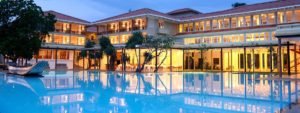
Sri Lanka has an assortment of accommodation options. Colombo features not only a host of modern five-star hotels but also iconic colonial-era hotels with the charm and romance of a bygone era.
The island is generally blessed with impressive hotels usually situated in stunning settings. The coastal areas, especially the west and south, have innumerable resort hotels, where package tourists mostly stay. Several are designed by Geoffrey Bawa, one of the 20th-century’s foremost Asian architects. Bawa’s vision encompasses a style referred to as ‘tropical modernism’ in which forms of modernism are beautifully softened and enriched by traditional influences and surrounding landscapes. There are also an increasing number of boutique hotels on the west and south coast, mainly centred at Galle.
Hill country towns such as Kandy, Nuwara Eliya and Bandarawela feature colonial era hotels, and for those who venture farther afield, perhaps to indulge in adventure sports, there are beautifully converted colonial homes, tea and rubber plantation buildings, jungle cabins, tree-houses and eco-lodges as well as camping under canvas.
Food
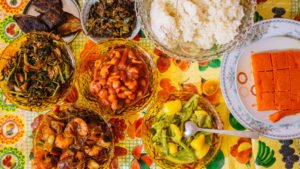
The cultivation of many types of rice, spices, vegetables and fruit, coupled with past foreign influences, ensures that Sri Lanka enjoys a varied and select cuisine. As a staple, rice is consumed with an assortment of colourful curries (eggplant, potato, green banana, chicken, fish) that range in potency from delicately-spiced to near-dynamite.
Other Sri Lankan staples include hoppers (a pancake-like snack), string hoppers (steamed rice noodles) and pittu (a mixture of flour and coconut). Lamprais – rice and accompaniments baked in plantain leaves – is a legacy of the Dutch. Seafood lovers will rejoice at the fresh fish, prawns, crab, squid and crayfish available. Desserts include buffalo curd eaten with palm-honey, and the Malay-derived caramel-like wattalapam.
Sri Lanka has a wonderful array of snacks, known as short eats, named cutlets, patties, malu pang (fish bun), and kimbula bunis (crocodile-shaped bun!) that are excellent for trips.
Delectable fruit includes the popular mango, pineapple, banana and papaya, but also many lesser-known but distinctive examples such as sapodilla, mangosteen, rambuttan, woodapple, custard apple and beli.
Shopping
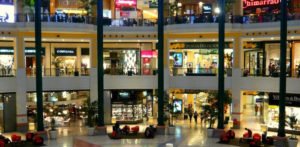
Shopping in Sri Lanka can take many forms: haggling with a handicraft-seller while sunbathing on the beach; choosing fruit from the traditional village store, the kadé,while side-stepping sacks of rice;or checking out the bargain-priced latest international fashions (Sri Lanka is a major garment exporter) while enjoying the ambience of a luxurious shopping centre in Colombo.
And there’s much in between. Visit a handicraft shop and familiarize yourself with traditional designs such as makara (a mythical animal, lion, swan, elephant and lotus which are most evident in brasswork (boxes, trays, lanterns, vases) and silverware (ornately carved and filigree jewellery, tea-sets) that make excellent souvenirs. In addition, ritual masks, lacquer ware, batik and handloom textiles, lace, and wood carvings are popular.
Last but certainly not least, Sri Lanka has the widest variety of precious stones among the world’s gem producing countries – blue sapphires, star sapphires, rubies, cat’s eye, garnets, moonstones, aquamarines and topazes being just a dazzling handful. What’s more, Sri Lanka naturally has a tradition in jewellery-making, so you can bring your gems to life.
Suggested Itineraries
Explore Sri Lanka to the best with the help of the listed itineraries. Sri Lankan tourism’s itineraries had been prepared with the view of enabling visitors to explore almost all the attractions in the country and could be easily adjusted to fit in the itineraries of international and local travel agents. It is best to explore the itineraries prior to planning a holiday to know of the best and the cheapest options available to every type of tourists. Each itinerary consist a series of experiences and activities surrounding one attraction, the easily accessible from one location. The time span allocated for each tour is between seven to eleven days and can be easily re-scheduled to suite each and every requirement, while visitors are welcome to mix and match few itineraries to suit their taste.
Untamed Sri Lanka – Celebrating a Wilder Sri Lanka
Despite its small size Sri Lanka boasts of one of the highest rates of biological endemism in the world. Nearly 16% of the animals and 23% of plants that are found in this small island are endemic to country.
Of the ninety-one species of mammals found in Sri Lanka Asian elephants, sloth bear, leopards, sambar and wild buffaloes engages the majority of the attention of wildlife enthusiast. Yet the rarest mammals of Sri Lanka are the red slender Loris, Toque Macaque, and Purple-faced Langur, who according to IUCN clarifications are endangered due to habitat loss.
Meanwhile the ocean around Sri Lanka is home to large families of cetaceans including the mighty blue whales, sperm whales and lively dolphins. Altogether 26 species of cetaceans rule the waters surrounding the country, making it one of the best locations for whale and dolphin watching.
Sri Lanka has one of the richest diversity of amphibians in the world, containing over 106 species of amphibians of over 90 of which are endemic. The country has long claimed to have the highest amphibian species density in the world with a85% of endemicity ratio in Amphibians, especially in the Sinharaja rainforest.
Despite the mighty elephants and rare amphibians found in the country birds are the glory of the Sri Lanka’s wildlife. Boasting nearly 433 bird species of which 233 are resident Sri Lanka holds 20 endemic species while another 80 species have developed distinct Sri Lankan races, compared to their cousins in Indian mainland.
This diversity of Lanka’s wildlife is celebrated and conserved at many wildlife sanctuaries found around the country. With a history of protection and compassion extended to all the living beings, Sri Lanka’s first animal sanctuary had been recorded as far as third century BC with the arrival of Arhant Mahinda in the country and the introduction of Buddhism.
Today there are five large national parks in the country including the Yala National Park, Kumana, Willpattu, Galoya and Udawalawa wildlife sanctuary. Among the smaller wildlife sanctuaries are the Maduru Oya, Bundala, Horton Plains and Wasgamuwa National Parks.
The Peradeniya Botanical Gardens in the central highlands of the countrycomprises a fine display of local and foreign flora of Sri Lanka including the rarest of palm and orchid varieties.
The Elephant Orphanage in Pinnawala and AthAthuruSevana in Udawalawaprovide a refuge to many abandoned and injured elephants of various ages and sizes, making them one of the largest tamed elephant herds in the world.
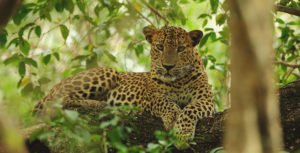
Leopard

Toque Macaque

Red Slender Loris
Heritage Sri Lanka
Sri Lanka with its nearly 3000 years of history holds some of world’s ancient cities including Anuradhapura, Polonnaruwa and Digamadulla. Remnants of these once glorious cities, their palaces, temples, monasteries, hospitals and theaters intricately carved and modeled out of stone lay abandoned amidst the soaring mountains.
Of all the ancient sites the most famed and most exquisite is the Kingdom of Anuradhapura. Sri Lanka’s third and the longest serving capital and one of the oldest continuously inhabited cities in the world is also one of the most sacred cities of World Buddhists. It was the capital of Sri Lanka from the Fourth Century BC up to the turn of the eleventh Century and was one of the most stable and durable centers of political power and urban life in South Asia. However the city itself is much older than the Kingdom of Anuradhapura and according to archeological evidence could have originated as far as tenth century BC. Anuradhapura was abandoned due to the due to repeated South Indian Invasions and was eventually forgotten with time until it was rediscovered in the early 19 th century.
Polonnaruwa, the second most ancient kingdom of the country was first made the political center of the country in the ninth century BC. Irrigation systems that are far superior to those of the Anuradhapura Age were constructed in Polonnaruwa kingdom, and still provide irrigation water to the farmers in and around Polonnaruwa. Yet the kingdom’s glory was short-lived and a South Indian invasion pushed the political centre towards the centre of the country by the eleventh century. Today the ancient city of Polonnaruwa remains one of the best planned archaeological relic sites in the country, a testimony to the discipline and greatness of the Kingdom’s first rulers.
Digamadulla, the Eastern kingdom of Sri Lanka was the agricultural and spiritual capital of the country during the Anuradhapura kingdom. Ruled by a viceroy of the Anuradhapura king Digamadulla was a prosperous province with grand palace, monasteries and temples at every juncture. Having received lesser attention of archaeologists compared to Anuradhapura and Polonnaruwa many a great creations of ancient Digamadulla had been lost to time, war and plunder while many more silently awaits in the midst of the forests covering the lands of Eastern Sri Lanka.

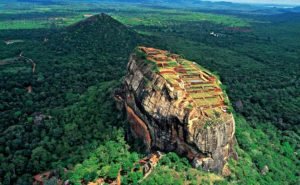
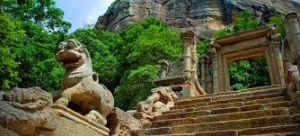
Some of the Sri Lankan Heritage
Pristine Sri Lanka
With nearly 1600 km of of palm fringed Coastline baked to perfection surrounding the country Sri Lanka is the ideal destination for beach bums worldwide. May it be windsurfing, kayaking, yachting, water skiing, scuba diving or jut lazing around for the perfect tan, Sri Lanka offers it all. The two weather systems of the monsoon winds makes Sri Lanka’s beach holiday a year round prospect. The north east winds make the south western coast sunny and the sea calm from November to March. The South West winds make the East Coast waters quiet with the constant sun shine happily in agreement.
The best of the Southern beaches include Tangalla, Beruwala, Mirissa, Bentota and Unawatuna with varying options including chic boutique hotels, glowing coral reefs, gentle sandbar sand undiscovered corners of paradise.
Beruwala is the first of the beaches to be met when travelling from Colombo. Famed for its tranquil bay with the palm shaded beach Beruwala offers excellent water sport facilities.
Benthota, the next in line is known for golden beaches dotted with luxury resorts and gentle seas, even during the rough seas. Tangalla is the rising star among the southern beaches is known for calm blue waters bordered with palm covered beaches. It is the dividing line between the tropical coves that dominate much of the south-west coast and the long, wave-lashed beaches that are found in the south-east corner of the island.
Mirissa is the beach resort for the lethargic, designed to be indulged at a slower pace watching the world pass by. It is also the best place for an ocean safari in search of blue whales and dolphins. Nights can be longer in Unawatuna, the most popular beach town in South. Many head to Unawatuna on Fridays for nonstop partying throughout the weekend yet this had not spoilt the tranquil charm in most parts. Snorkelling at the Buena Vista Reef is a thrill of a life time while boat rides to the jungle patched islands for glimpse of bird life is ideal for bird lovers.
Although Sri Lanka’s southern beaches has been long discovered by the world traveller the east coast is yet to be fully discovered. The most known among the Eastern beaches is the Arugam Bay, the high church of surfing enthusiasts’ in the region. Wildlife parks streaming with elephants, miles of lonely wide beaches and excellent views are the options available for non-surfers. Once a mere rumour, Uppuveli beach is open to the sun seekers after a three decade long civil war. The beach is quickly gaining fame as the best swimming and snorkelling location competing with the nearby Nilaveli beach and the coral gardens of the pigeon island.
On the Western corner of the country to the north of Colombo is the Negambo lagoon. Its beaches, an old favourite with local and foreign visitors and lagoon famed for lobster harvesting. The collection of resort hotels offering options of water sports competes with the urge of just sit and watches the fishing boats disappear in the horizon. Further north from Negombo is the Kalpitiya, sandwiched between the sea and the lagoon the beach is ideal for the lazing around yet the sea off Kalpitiya is the best location in the country to watch Blue whales, sperm whales and pilot whales and spinner dolphins, other species including Risso’s Dolphin, Bottlenose Dolphin and Striped Dolphin.
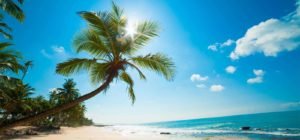
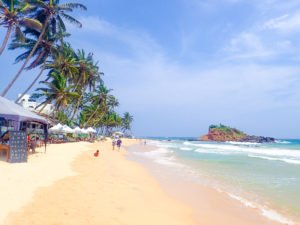
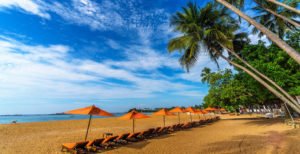
Sri Lankan Beaches
Romantic Sri Lanka
The central highlands of Sri Lanka are filled with pictures of stirring mountains carpeted with lush green tea gardens, roaring waterfalls mingling with the clouds and landscapes shimmering in sunlight and disappearing under the rising mist.
Situated over 6000 feet above the sea level the changing faces of Sri Lanka’s great mountain ranges are best viewed at leisure and on foot. The temperature varies between 160 Celsius to 20Celsius providing an ideal climate for walking.
The most favorite and renowned hill-country location is Nuwara Eliya, The most important tea production hub of Sri Lanka, founded by Samuel Baker, the discoverer of Lake Albert and the explorer of the Nile in 1846.The city’s mild climate lent itself to become the leisure capital of the country and was the prime sanctuary of the British civil servants and planters in colonial Ceylon. Nuwara Eliya, called Little England then, was also a hill country retreat where the British colonialists could immerse in their pastimes such as fox hunting, deer hunting,elephant hunting, polo, golf and cricket.
Many of the buildings in the city hold architectural features from the colonial past such as the Queen’s Cottage, General’s House, Grand Hotel, Hill Club, Town Post Office and even new hotels have borrowed the colonial style. Many private homes still maintain their old English-style lawns and gardens, keeping true to the spirit of ‘Little England’.
Following closely behind is Bandarawela, a plantation town in the Badulla district. The city boasts of its fair share of waterfalls and buildings of colonial architecture including the Bandarawela Hotel, the Cargilles building, the Tennis club and Adisham Bungalow. Just eight km away fromBandarawela isElla, a sleepy village nestled in a valley gazing through Ella gap on plain nearly 1000 feet below.Ella is surrounded by hills and is perfect for walks through tea plantations to temples and waterfalls.
Another favorite hill station is Balangoda, with mountain ranges and views to beat Nuwara Eliya. Although not organized as a leisure city Balangoda and its surroundings offer one of the best views, treks and adventures in Sri Lanka. Just 15 km away from Balangoda is Belihuloyaa little hamlet with unspoiled views and opportunities for trekking, canoeing and bird watching.
Adam’s Peak or the Sri Padaya Peak, a 2,243 metres conical mountain located in the southern reaches of the Central Highlands, in the Ratnapura district is also a popular hill station especially for its religious significance. The 1.8 meter rock formation near the peak is long believed to be the sacred foot print of Lord Buddha by locals.
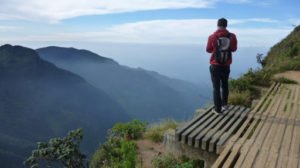
View from World’s End (Horton Plains)
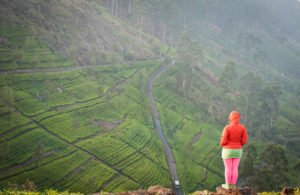
Haputhale

Kithulgala
Northern Sri Lanka
North of Sri Lanka is a world apart from the rest of country. The region had always been closer to southern India than to Colombo and was repeatedly settled and invaded by Tamil migrants from southern India and has retained a unique character and culture, one which owes as much to Hindu India as to Buddhist Sri Lanka.
The thirty year old war, which engulfed the area, had set the clock backwards in the Northern Peninsular, where LTTE terrorists and the Sri Lankan Army were engulfed in intense fighting until the war ended in 2009. The region is gradually emerging from its long years of isolation and fighting, and the painful process of rebuilding of shattered towns and villages, de-mining fields, restoring roads and returning refugees to their former homes is likely to continue for some time to come.
For the explorer, the north is Sri Lanka’s final frontier, and offers an opportunity to explore a region emerging from over twenty years of isolation and civil war.
Reaching Jaffna is now straightforward and requires no security checks or clearance, and although it still entails either a long road journey or a short flight, those who make the effort are amply rewarded.
Foremost of the attractions is the fascinating town of Jaffna, with its absorbing mixture of colonial charm and vibrant Tamil culture, while the Jaffna Peninsula and surrounding islands offer a string of remote temples, Hindu and Buddhist alike, beaches and more off-beat attractions.
Arriving in Jaffna can come as a culture to the uninitiated, and it is difficult to miss the profound Indian influence made obvious by the gradual switch from the singsong cadences of Sinhala to the quick-fire intonations of Tamil, as well as a listof other details like the Indian pop music which blares out of shops and cafés, and the hordes of kamikaze cyclists who fill the congested streets.
Yet the town has its own unique and complex identity shaped in true Sri Lankan fashion, by a wide cross-section of influences, including Muslim, Portuguese, Dutch, British and Sinhalese, with colourful temples set next to huge churches, and streets dotted with ancient Dutch and British residences.
The rural surroundings of the Jaffna town, and the source of much of its former prosperity, is the Jaffna Peninsula, a fertile arc of land criss-crossed with small country roads lined with endless walled gardens and smallholdings, growing a wide variety of crops including chillies, onions, bananas, jackfruit and grapes.
Further south, the vast track of thinly populated countryside known as Vanni, is little visited, even by locals, although the remote church at Madhu draws a steady stream of pilgrims while the war-torn town of Kilinochchi, former capital of the LTTE, provides a stark reminder of the destructions of the war.
To the west of Jaffna, a string of islands straggle out into the waters of the Palk Strait towards India. Two of them, Kayts and Karaitivu, almostjoin up with the mainland, to which they’re connected by causeways, as is Punkudutivu further west. Punkudutivu is the starting point for ferries to Nainativu, home to two important religious shrines, and the remote island of Delft.
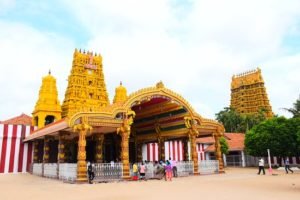
Nallur Kandaswamy Temple in Jaffna
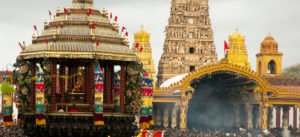
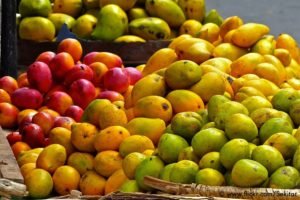
The Famous Jaffna Mangoes
World Class Sri Lanka
Despite its small size Sri Lanka is a global leader in many a fields and is had been known worldwide for its choice gems, tea and cinnamon since the turn of the last century.
Sri Lankan cinnamon, ivory and gems had been the main cause for invasion of two nations, Portuguese and Dutch, who followed the Moor traders to the country in search of the world’s best spices and riches. According to the Dutch, who reorganized the cultivation and marketing of cinnamon in Sri Lanka, the ‘shores of Sri Lanka had been full of it, that you can smell it eight leagues out to sea’. Even today the country produces the world best cinnamon and one of the world’s top cinnamon exporters.
However prior to the country shot to fame for its cinnamon, the world knew Sri Lanka for its beautiful and valuable gemstones. ‘Rathnadeepa’ or the ‘land of gems’ was used as a synonym for the country and even today the Sri Lankan gems specially the Ceylon blue sapphires are celebrated worldwide for their distinctive color and luster.
Yet it is the Ceylon tea, which the world identifies the country by. Introduced to the country in the 19th century by Colonial British, Sri Lanka had held the crown for producing the world’s best tea. Although many a countries had joined the world tea market, Ceylon Tea made in Sri Lanka still continues to be the favorite of the tea lovers worldwide.
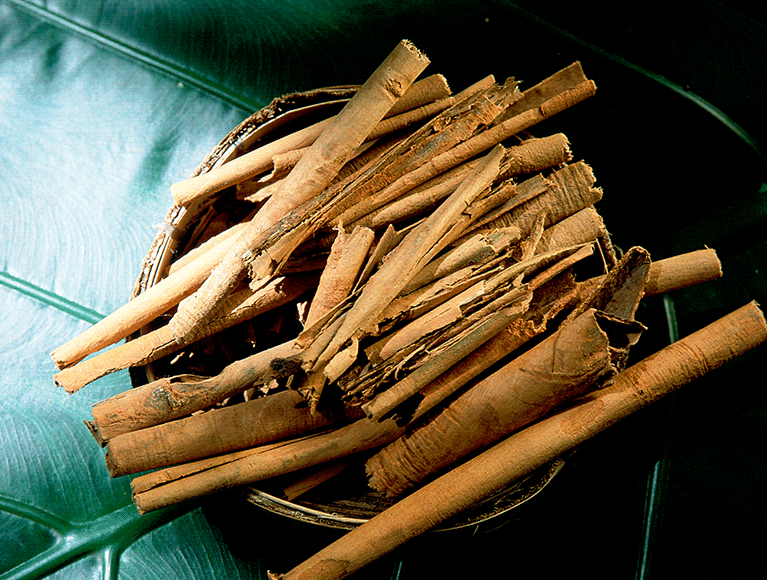
Cinnamon in Sri Lanka
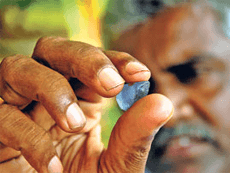
Blue Sapphires
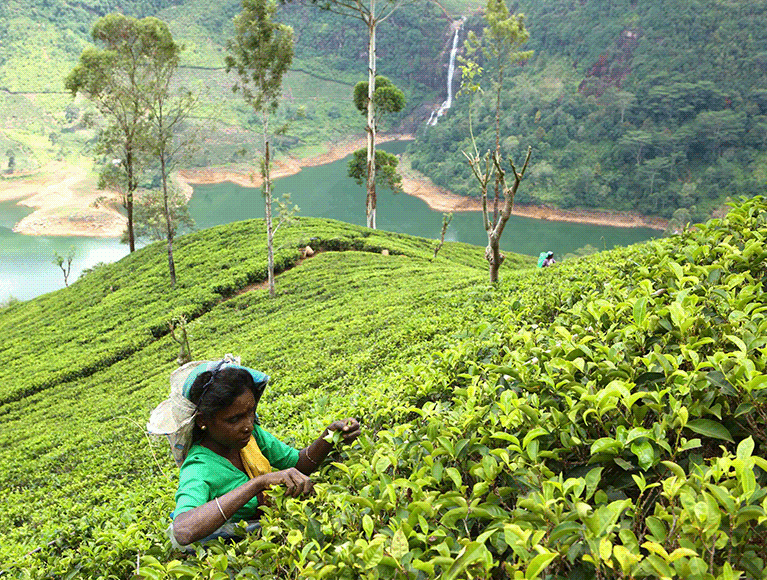
Ceylon Tea
Another introduction of the Colonial British, cricket too holds a special place in the hearts of Sri Lankans. A match is played at every street corner with improvised bats, balls and wickets while an international match played by Sri Lanka virtually brings the country to standstill. The Sri Lankan cricket team is known for their true sportsmanship and team spirit while players like Sanath Jayasuriya, Kumar Sangakkara and Muttiah Muralitharan portrays what is best in Sri Lankan cricket.
Meanwhile the country’s position as global leader in producing quality garment products for leading brands in Asia, Europe and the USA, is making the term ‘made in Sri Lanka’ a statement of quality. Sri Lankan apparels re-launched as ‘Garments without Guilt’ is guided by principles of protecting workers rights, proving quality working environments and upholding equal opportunities beyond gender and disability. Garment producers thrives to protect the environment while doing away with discrimination and the stringent labor laws and children rights Sri Lanka ensures that no children as involved in producing the garments.
The country is also in the forefront as a IT hub in the South Asian region although it is generally outshines by neighbouring India. Sri Lanka’s position as a rising Software exporter had been established by the great achievements of local companies made in the global arena. Their recent achievements include the development of world class capital market solution and development of medical invoice system, widely used in many parts of the USA and Europe.
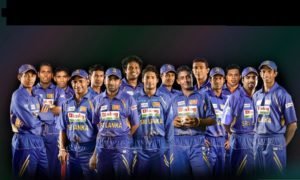
Sri Lanka Cricket
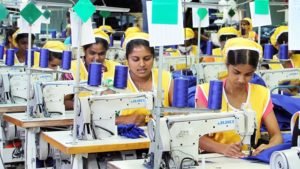
Garment Industry in Sri Lanka

Software Industry in Sri Lanka
United Nations Conference on Trade and Development’s (UNCTAD) Information Economy Report for 2012 listed Sri Lanka s country that has a software industry with a high export market penetration. The Sri Lankan IT industry is predicted to reach a revenue value of US$ 2 billion by the year 2020.
Despite its negative effect, Sri Lanka had been known to export ‘brain’ to the leading American and European countries for the last few decades, confirmed by the fact that there are nearly 270 Sri Lankan scientists working at NASA today. Brian Drain had been considered a major issue effecting the development of the country it had also helped to establish the name of Sri Lanka in the world.

